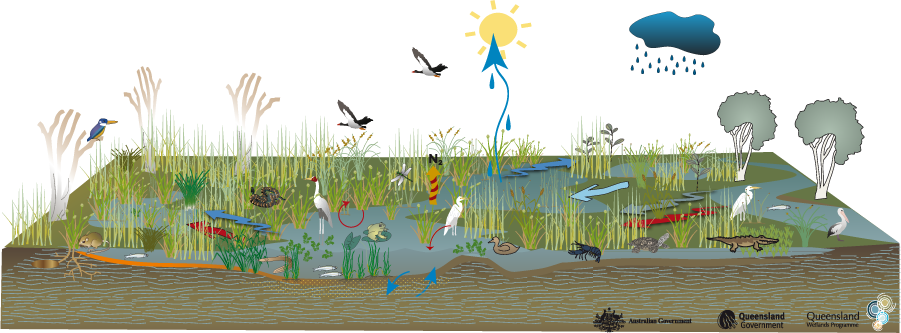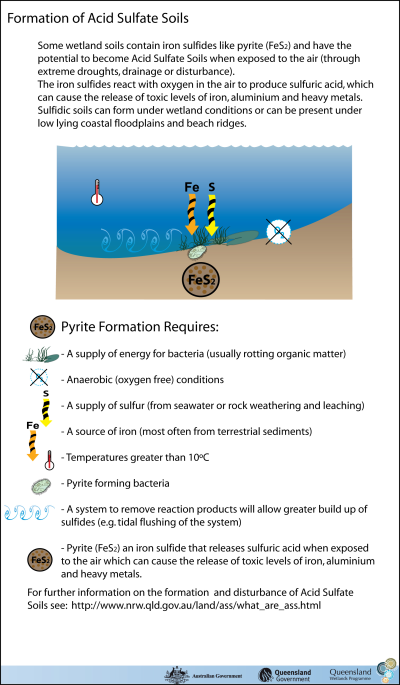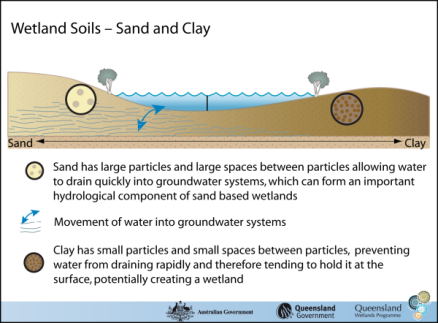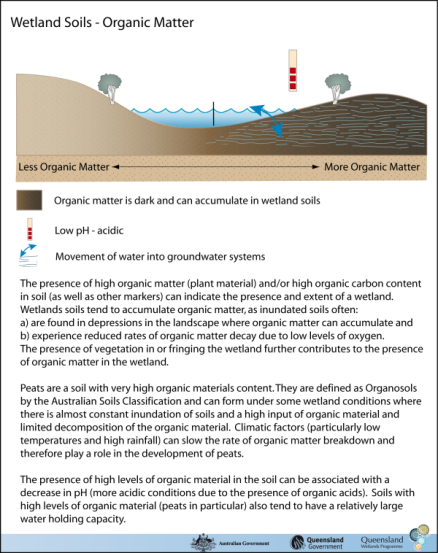|
|
Coastal and subcoastal floodplain grass, sedge, herb swampCoastal and subcoastal floodplain grass, sedge, herb swamp – GeomorphologyClick on elements of the model or select from the tabs below Coastal floodplain grass, sedge, herb swamps can be found on a variety of soils, typically dark, heavy clays that were originally deposited by streams (alluvial). This soil type includes black cracking clays (for an example, see dry model). These soils have a high proportion of clay that can swell and shrink as the soil wets and dries. When dry, cracks form in the soil and usually extend to the surface, allowing vegetation and other surface organic material to fall into and mix with deeper parts of the soil profile, hence the name ‘self-mulching soils’. Cracks in the soil initially allow rainfall to enter easily, but as the soil swells with water from the bottom up, the cracks close. Solonetzic soils are also commonly associated with this wetland habitat type. On marine plains the underlying substrate may have a high salt content but may be overlaid with more recent alluvial deposits that are not saline.
Last updated: 22 March 2013 This page should be cited as: Department of Environment, Science and Innovation, Queensland (2013) Coastal and subcoastal floodplain grass, sedge, herb swamp – Geomorphology, WetlandInfo website, accessed 8 May 2025. Available at: https://wetlandinfo.des.qld.gov.au/wetlands/ecology/aquatic-ecosystems-natural/palustrine/floodplain-grass-sedge-herb-swamp/geomorphology.html |

 — Department of the Environment, Tourism, Science and Innovation
— Department of the Environment, Tourism, Science and Innovation






